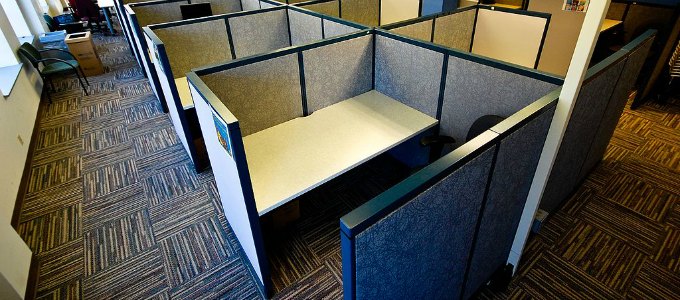There’s more than a half-century of architects, designers, manufacturers and efficiency experts behind the ostensibly staid office cubicle many workers find themselves sitting in at one point or another (many might be doing so at this exact moment).
As it turns out, corporate America’s office history — as well as the eras and cultures it spawned — is a heck of a lot more interesting than the office cube itself.
To prove it, Nikil Saval, an editor at literary magazine n+1, wrote “Cubed: The Secret History of the Workplace.” The book aims to tell the story behind the U.S. office, a story that extends beyond the chairs, tables, desks and decor of our country’s offices but captures the politics, social behaviors and norms that came with it.
The result is a 368-page book that explores offices from their beginnings in America to their place in the 21st century’s increasingly remote-working society.
Saval talked with Talent Management on the topic and the nuances of today’s workplace environment. Edited excerpts follow.
Why did you decide to research the history of the workplace?
I had these psychological connections to my workplace and the way it was designed. I would get freaked out when two people walked into an office and closed the door, and I would be in my precarious, exposed stall the entire time. I think that’s when the connection started to fuse in my mind. It also helped that I was watching shows like “The Office.” I started thinking about it in all parts of my life, and then I started informally researching it.
That’s when I started to see there was something there in the way we work. I decided to figure out what it had been like to work in these places and why it had never turned out the way people thought it would. I started with the history of the cubicle, and I started seeing a pattern of these grand visions for work going awry.
What went wrong with the cubicle?
The story of the office cubicle is shocking to anyone who works in one because the cubicle was meant to liberate office workers from drab surroundings — which is sort of tragic irony. It was invented in the 1950s and by 1968 was a three-wall space meant to give office workers individual space.
Instead, managers used cubicles to cram as many people as they could into as little a space as possible. They became a symbol of arbitrariness in the workplace.
How much of a role does the office environment have in attracting and retaining talent?
It depends on the tightness or looseness of the labor market in a given industry. The industries I found that really put a lot of effort into the design of their workplaces — places like Google or Silicon Valley in general — have people who often move [from company to company]. I think offices that really try to put emphasis on design want to make their workplaces justifiable.People associate offices not necessarily with great environments or places they love, especially after years of things like “The Office” and “Office Space.” They [employers] are trying to show the company cares.In a way, it’s always been like that if you look at the history of the office. They were trying to project a company that wanted you to stay there.
What kind of employee is most likely to take office environment into account when deciding whether to take a new job or stay in a current one?
Everyone cares about how their office looks or how it functions. But maybe the expectations have changed a little bit because a generation has expectations of the office environment that come with being so familiar with the digital space. Gen Y might not be so comfortable with the notion that one has to come into the workplace. The expectations come from people who are familiar with working all over the place in any given setting. On the other hand, it’s easier to make changes when that group of people organizes or has the power in the workplace to do so.
As remote work becomes more popular, what can companies do to make their offices more appealing?
I think the best kind of workplace is the kind of workplace that is most controlled by workers themselves over how it functions. … It’s becoming harder and harder to separate where you’re not working and where you are. We’ve all seen this at cafés and airports. Every possible surface can turn into a desk. So that is definitely changing the way people are thinking about building offices and space.
To find out whether or not open office spaces are just a ploy to save money, read the sidebar that accompanies this story here.
Image courtesy of Wikicommons.















